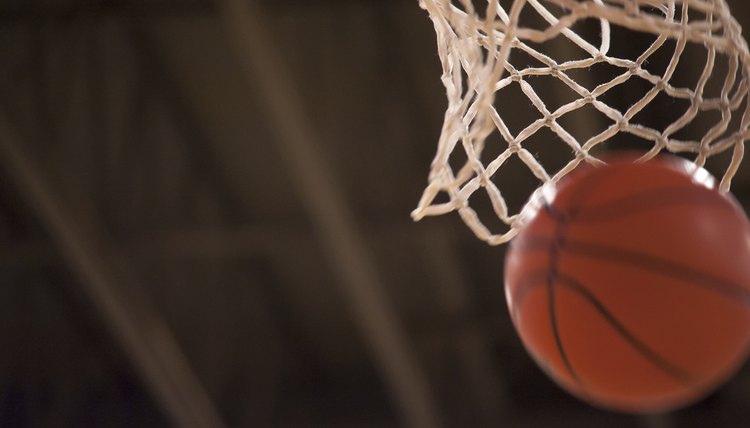Can a Defensive Player Touch an Offensive Player in Basketball?

Basketball is a limited contact sport. Offensive players generally have the right of way on the court, with or without the basketball. Most forms of defensive contact with an offensive players may result in a foul. But defensive players may touch an offensive player in some situations without the referee calling a foul. Interpretations vary from level to level and official to official, but generally some forms of contact are allowed.
Boxing Out For a Rebound
When an offensive player shoots the basketball, defensive players are allowed to "box out" offensive players to establish rebounding position. Defenders may turn, initiate contact with the offensive player with their backside, bend at the waist, assume a wide and firm stance and spread their arms upward. However, using force to back an offensive player away from the basket could result in a foul call.
Holding Post Position
When offensive players set up on the high or low post, they often initiate contact with the defensive player while establishing their position. Defensive players are generally allowed to sustain this body contact while holding or shifting their own position. Referees may call fouls on defensive players who clearly push with their hands or body, however.
Taking the Charge
A defensive player may establish good defensive position and draw charging fouls on offensive players. What constitutes good defensive position varies slightly from level to level and is subject to each referee's judgment. Generally, defenders must get into a defensive stance and maintain it, keeping their feet set and their body upright. While establishing this position, they must give the offensive players enough room to change course. Offensive players who collide with defensive players in that scenario may earn a charging foul.
Tracking Offensive Players
Defensive players usually can use their hands to feel for offensive picks being set to their blind side. They can generally use their hands to keep track of their player away from the ball. But using hands to push, hold or otherwise impede an offensive player can result in a foul. The amount of casual contact allowed varies from level to level and referee to referee.
Incidental Contact
When a defensive player collides with an offensive player while going after a loose ball, the referee may rule the contact unintentional and incidental. This can be a difficult judgment call for an official.
References
Writer Bio
Jeff Gordon has been reporting and writing since 1977. His most recent work has appeared on websites such as eHow, GolfLink, Ask Men, Open Sports, Fox Sports and MSN. He has previously written for publications such as "The Sporting News" and "The Hockey News." He graduated from the University of Missouri-Columbia School of Journalism in 1979 with a bachelor's degree.
